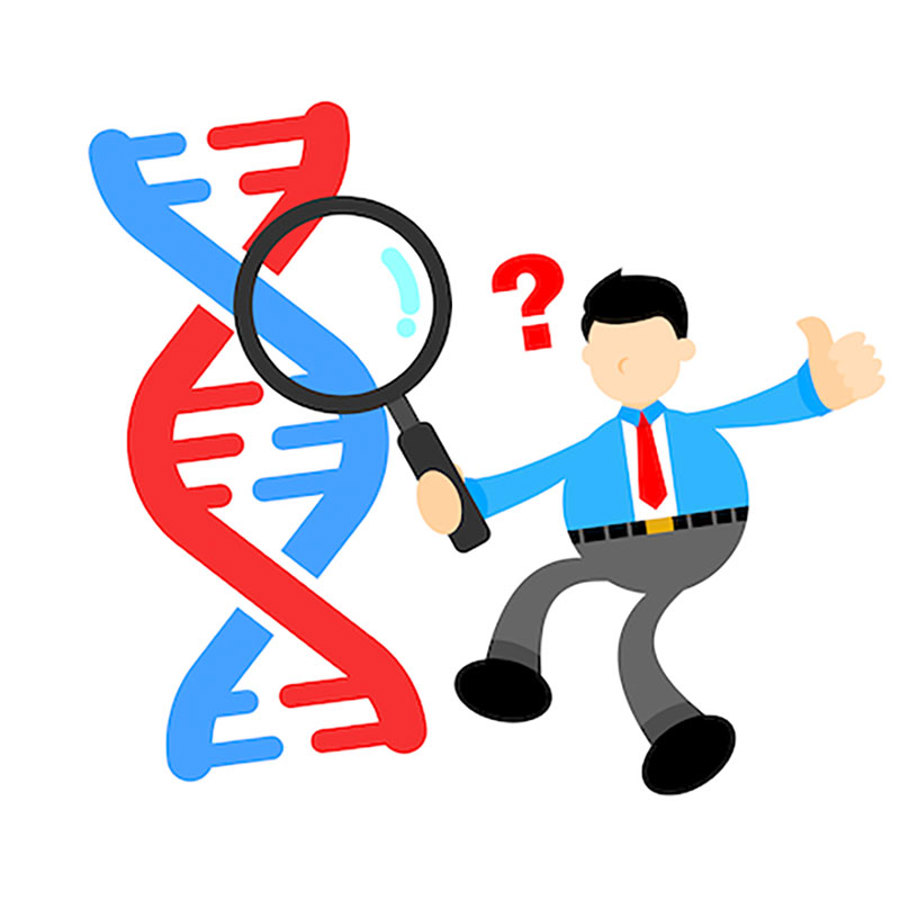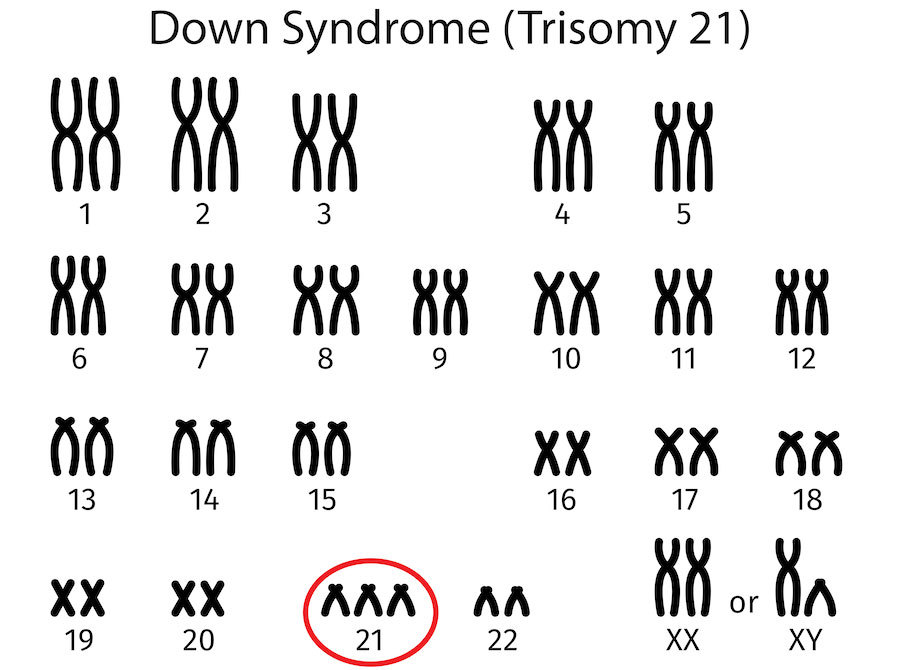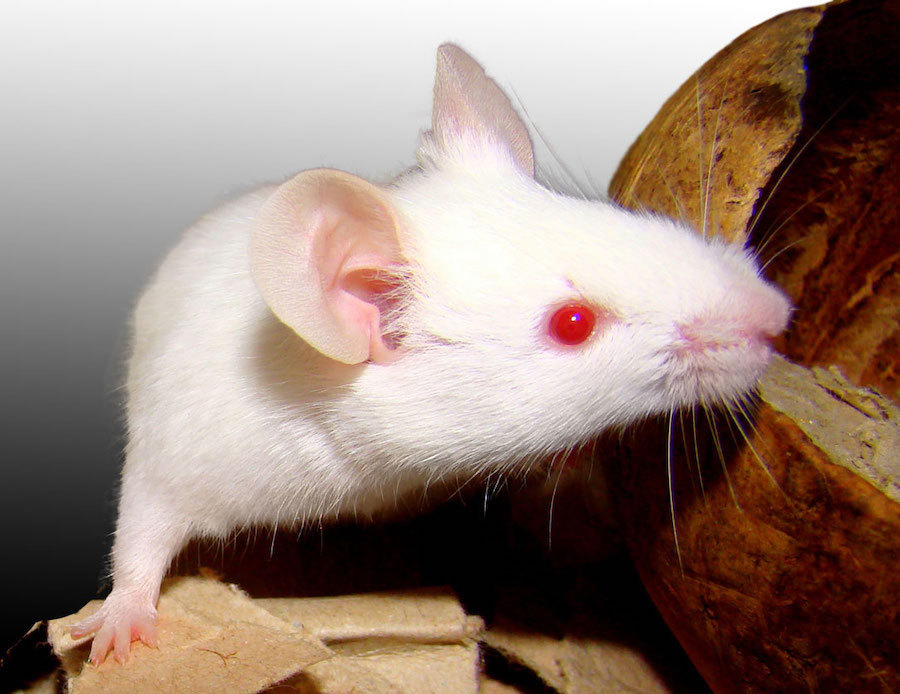
Are there ways to prevent or cure Down Syndrome?
April 5, 2005

- Related Topics:
- Trisomy/Aneuploidy,
- Chromosomes,
- Medical genetics
A curious adult from California asks:
“Since it is already known that Down Syndrome is caused by an extra chromosome at the 21st, what needs to be done to intercept or remedy this condition? What is being considered now? Is there anything that looks promising?”
Down syndrome is a common genetic cause of intellectual disability. It is caused by an extra copy of chromosome 21, which has hundreds of genes. Scientists are actively trying to find which specific genes are responsible for the symptoms of the disease.
Once found, researchers might be able to develop ways to block these extra genes. Current treatments involve special educational and occupational therapy – there is no cure.
Chromosomes and Down syndrome
How does an extra chromosome cause disease? Chromosomes are rope-like structures made up of genes laid out in a series. Most human cells contain 46 chromosomes in 23 pairs.
For 22 of these pairs, both chromosomes are identical. So, each gene is present in the cell in two copies. (For the 23rd pair, females have two X chromosomes, males have one X and one Y.)
In Down syndrome, cells have 3 copies of some or all of the genes on the 21st chromosome. These extra genes cause problems with how organs like the brain, heart and skeleton develop and perform. But we don't know which specific genes cause the symptoms.

Chromosome 21, one of our smaller chromosomes, contains an estimated 200 to 250 genes. Can scientists narrow these down to the ones responsible for disease?
They are certainly trying. Researchers created a mouse with features of Down syndrome by giving it only 100 extra chromosome 21 genes. These extra genes changed the face shape and the behavior of the mice.1
Then they looked at special cases of Down syndrome in people. Some rare individuals inherited only a piece of an extra chromosome 21.
The pieces they have show that certain parts of chromosome 21 are highly associated with Down syndrome symptoms. This led to the description of what is called the Down syndrome critical region (DSCR), which is a region of the genome thought to be necessary for Down syndrome.2
Recently, scientists altered the chromosomes of mice to have an extra copy of only the genes in the DSCR. It was expected that those 33 genes would cause the major features of Down syndrome.
Surprisingly, the resulting mice did not have the changes in facial features found in Down syndrome.3 So, more genes in addition to those in the DSCR contribute to the disease.
This result is causing some scientists to change their thinking. The syndrome may result from small damaging effects of many genes rather than major effects from a few genes. This will be a challenge to sort out but the mouse models will allow many combinations to be tested.

Potential for treatments
When those genes responsible are identified, what can be done? Based on what each gene does in the cell there may be drugs that can stop or reverse the damage of extra gene action.
For example, one gene on chromosome 21, called APP, is involved in Alzheimer’s disease. People with Alzheimer’s have trouble thinking and remembering. Down syndrome patients have learning, behavior, and memory problems that could be caused by too much APP.
In Alzheimer’s disease, APP protein forms tangled fibers and plaques that harm brain cells. And there are decreased levels of chemicals that help brain cells talk to each other.
These changes also occur in Down syndrome patients. In fact, the brains of adults who had Down syndrome look similar to the brains of people who had Alzheimer’s.4
Since Alzheimer’s disease and Down syndrome seem to share some features, can they share treatment? It looks promising.
Doctors have been testing the Alzheimer’s drug Aricept on Down syndrome patients.5 This drug doesn’t directly act on APP. Instead it boosts the levels of crucial brain chemicals.
There are hopeful findings of improved learning and language skills in Down syndrome patients who take Aricept. Trying the drug on larger groups of patients is the next step.
Further therapies might be developed when we learn more about which genes cause the features of Down syndrome. Drugs may be able to counteract the effects of those extra genes. Or, new technologies that can turn down the genes may be useful as treatment in the future.

Author: Dr. Robin Kimmel
When this answer was published in 2005, Robin was a postdoctoral fellow in the Department of Epithelial Biology, studying the genetic mechanisms of skin cancer development in the Khavari lab. Robin wrote this answer while participating in the Stanford at The Tech program.
 Skip Navigation
Skip Navigation
